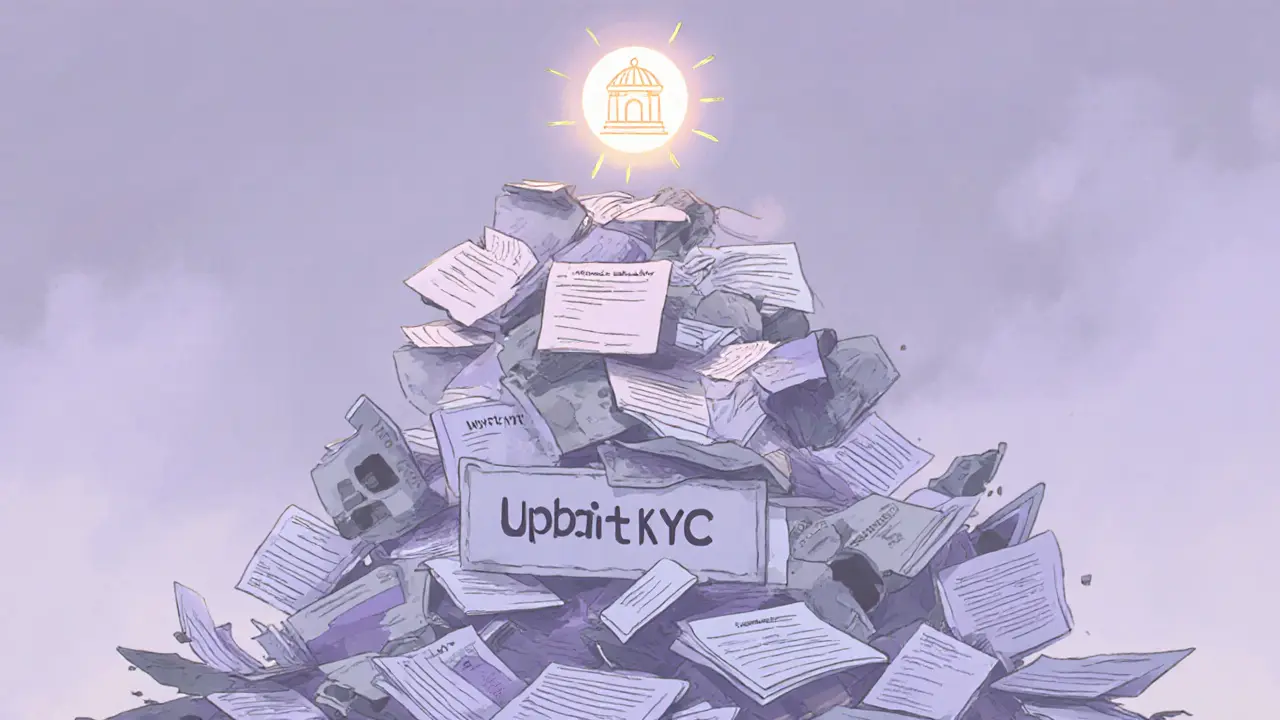Cryptocurrency Regulation
When working with Cryptocurrency Regulation, the collection of laws, guidelines, and enforcement measures that control crypto assets, exchanges, and related services, you quickly see why it matters for anyone in the space. Cryptocurrency regulation isn’t just paperwork – it determines who can launch a token, how banks can handle crypto, and what penalties apply for non‑compliance.
One of the biggest forces behind any rule set is the Central Bank, a nation’s monetary authority that monitors financial stability and enforces anti‑money‑laundering policies. When a central bank issues a ban, like Iraq’s total crypto prohibition, it instantly reshapes market access and pushes users toward alternative channels. In short, central bank oversight drives the scope of cryptocurrency regulation.
Another key player is the CBDC, a digital version of a sovereign currency issued by a central bank, often built on blockchain technology. Countries adopting a CBDC, such as Iraq’s planned state‑run digital coin, use the same regulatory framework that governs private crypto, blending public and private digital finance. This creates a direct link: regulation requires CBDC integration to ensure legal consistency.
Licensing is where the rubber meets the road for exchanges and service providers. The Crypto Licensing, the formal approval process that grants crypto businesses the right to operate under local laws sets the baseline for compliance. The UAE’s fast‑track licensing, for instance, has turned the nation into a major hub, showing that clear licensing rules attract investment and boost market activity.
Tax policy shapes behavior just as powerfully as licensing. Crypto Tax, the fiscal rules that dictate how crypto transactions, mining income, and capital gains are reported and taxed can either incentivize mining operations or drive them away. Sweden’s sudden removal of a 98% tax break turned a thriving mining sector into an exodus, proving that tax decisions are a core component of cryptocurrency regulation.
In some jurisdictions, the only way to interact with crypto is to dodge the ban. China’s strict prohibition has spawned a whole market of VPN legal risks, where users face heavy penalties if caught. Understanding those enforcement nuances is part of the broader regulatory landscape, reminding us that regulation often extends beyond finance to technology access.
Energy crises add another layer. Kosovo’s mining ban, driven by power shortages, evolved into a conditional allowance for green‑energy miners. Sweden’s steep energy tax hike and similar moves elsewhere show that regulation can be triggered by non‑financial concerns like sustainability. These examples illustrate how policy, environment, and finance intersect.
Why regulation matters today
All these pieces—central bank oversight, CBDC rollout, licensing frameworks, tax rules, and even energy policies—form a web that defines the operating environment for crypto projects. Whether you’re a trader, miner, or startup founder, grasping this web helps you navigate risks, spot opportunities, and stay compliant.
Below you’ll find a curated collection of deep‑dive articles that break down each of these themes, from Iraq’s ban to the UAE’s licensing boom, Sweden’s tax reversal, and more. Dive in to see how real‑world regulation shapes the crypto landscape and what you can do about it.

Governments worldwide are seizing billions in cryptocurrency, with the U.S. now holding over $17 billion in Bitcoin as a strategic reserve. Learn how different countries handle crypto seizures, what assets are targeted, and what it means for users.
Jonathan Jennings Dec 4, 2025
Upbit faced over 500,000 KYC violations, exposing systemic failures in South Korea’s largest crypto exchange. This case reshaped crypto regulation in Asia and set new global standards for compliance.
Jonathan Jennings Nov 26, 2025
Tunisia banned all cryptocurrency transactions in 2018, making it one of the strictest crypto regimes globally. This article explains why, how it's enforced, what's still happening underground, and whether the ban might end soon.
Jonathan Jennings Nov 25, 2025
In 2024, $15.8 billion in cryptocurrency flowed to sanctioned entities, proving crypto is now a key tool for illicit finance. Bitcoin dominated, DeFi enabled evasion, and exchanges like Garantex became targets. Here's what it means for users and regulators.
Jonathan Jennings Nov 23, 2025
Turkey allows crypto trading but bans payments with digital assets. New 2025 rules require heavy licensing, mandatory KYC, and give authorities power to freeze accounts. Learn how this affects traders and the future of crypto in Turkey.
Jonathan Jennings Nov 19, 2025
KYC in cryptocurrency is a mandatory identity verification process required by most exchanges to prevent fraud and comply with global regulations. Learn how it works, why it's necessary, and how to pass it without rejection.
Jonathan Jennings Nov 14, 2025
OFAC cryptocurrency sanctions are now enforceable, with fines up to $750,000 for non-compliance. Learn what crypto businesses must do in 2025 to avoid penalties, block sanctioned wallets, and build a real compliance program.
Jonathan Jennings Nov 13, 2025
Explains Nigeria's 2025 cryptocurrency regulations for businesses, including SEC requirements, compliance challenges, and legal pathways to accept crypto payments safely.
Jonathan Jennings Oct 22, 2025
A clear, up‑to‑date guide on Nigeria's new crypto tax law, covering taxable events, compliance steps for individuals and businesses, and how to avoid penalties.
Jonathan Jennings Oct 15, 2025
Explore 2025 crypto tax rates across 12 key countries, see where you pay the most, where it's tax‑free, and learn practical steps to stay compliant.
Jonathan Jennings Oct 14, 2025
MAS tightens Singapore's crypto rules, limiting new DTSP licences, enforcing AML/CFT standards, Travel Rule, and hefty penalties after a June 30, 2025 deadline.
Jonathan Jennings Oct 13, 2025
Iceland once led the world in crypto mining thanks to renewable energy and low costs. By 2025, its grid is full, new mining is blocked, and the government is shifting focus to cleaner, less power-hungry tech. Mining survives - but won't grow.
Jonathan Jennings Oct 11, 2025




